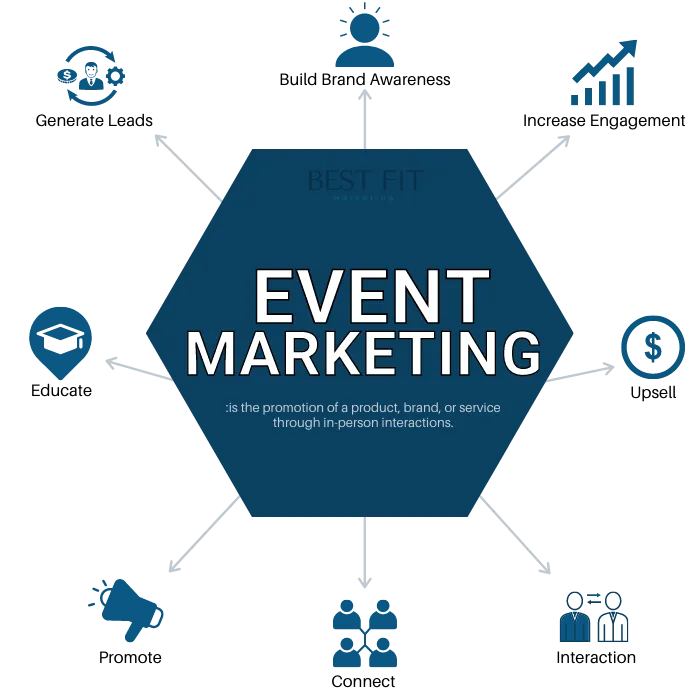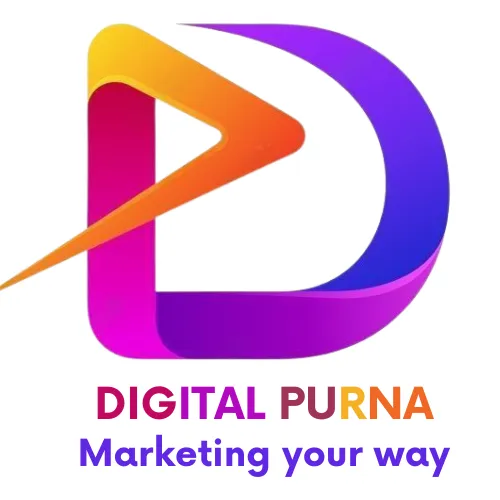Event
Marketing
What is event marketing?
Event marketing describes the process of developing a themed exhibit, display, or presentation to promote a product, service, cause, or organization. It leverages in-person engagement to connect with
customers.
Events can occur online or offline. You can participate in, sponsor or host an event yourself. Using events as a marketing channel gives potential customers a unique, firsthand interaction with your company, giving them a true sense of its focus, perspective and personality.
An event marketing strategy involves interacting face-to-face with customers at events such as conferences, trade shows, and seminars. Each event is unique in its audience, content, and culture. Thus, it deserves its own marketing strategy. Staying on top of the event marketing game is key to success for the event marketer of the future.
Activate Your Event Marketing
Events are vital for creating authentic conversations with your customers. Contact us today to start planning your next event marketing brand activation.

Why is event marketing important?
Today, businesses need to stand out from the crowd, and event marketing is a great way to do that.
In addition to providing you with new ways to reach your future and returning customers, event marketing can also allow you to collect customer data from other sources so you can get to know them before the event, so they are treated as individuals instead of just a group.
And it works.
Data-driven marketing and personalization are priorities for 73% of event planners. Your demand generation mix should include event marketing, regardless of whether you are hosting a small webinar, a large trade show, or a private event for executives.
BENEFITS
Event marketing can benefit your business in a variety of ways:
• Build brand presence before, during or after an event
• Generate leads
• Raise brand value
• Create new opportunities
• Promote a specific product or feature
• Increase customer engagement, satisfaction, and retention

Event planning
Event planning can also serve as a tactical and visible engagement point for your sponsors and partners.
After careful consideration, buyers now make their own purchase decisions. Marketers must be ready to capitalize on every opportunity to build relationships, generate goodwill, and earn prospective customers' trust.
In spite of the fact that there are less time-consuming and costly methods of marketing available, incorporating event marketing into your overall strategy can pay dividends when it comes to connecting with buyers on a deeper level.
Types of event marketing.
To create a holistic event marketing program, be sure to include both offline and online events to reach as many potential customers as possible.
Online events. A web-based interface connects presenters and participants in online events. With an online event, you can easily reach a geographically dispersed audience at a lower cost than with an in-person event. Covid-19 brought online events mainstream. Forbes reported that one virtual event platform experienced 1000% growth in the first six months of the pandemic. A webinar is one type of online event, while a virtual event, a live streaming event, and a hybrid event are other types of online events. We'll examine each of them one by one.
Webinars. During webinars, presentations, discussions, or workshops are held online. On demand or in real time, they typically last 30 to 60 minutes. It is possible to interact on many levels during a real-time webinar. Through web conferencing software, participants might participate in group discussions. As well as asking questions, they may discuss topics directly with the presenters.
Virtual events. People in different locations can participate in virtual events in a more realistic environment. In a virtual booth, participants can collect materials, meet staff, ask questions, and even pick up some virtual swag. Participants tend to participate in these programs in real-time. Networking and educational sessions are often included with the interactive features.
Livestreaming events. The events are streamed live directly to viewers. For better quality, you can hire a full production crew or use a simple webcam. The Livestream, Ustream, and Google Meet applications offer a live streaming, recording, and social media functionality that allows you to engage with your audience. Since the pandemic, everything from employee Q&A sessions to major award ceremonies has been livestreamed.
Hybrid events. In addition to moving back to a physical format, many events are adopting some online features. The result is greater attendance and flexibility while still maintaining the buzz of an in-person event. It is likely that hybrid events will involve livestreaming and virtual participation. A seamless integration between virtual and in-person audiences is provided using certain platforms and technology. Occasionally, hybrid events connect groups that meet in person around the world into a larger virtual community.
Physical events. Attending offline events and interacting in person require physical attendance. While offline events often require more investment, they offer the opportunity to build relationships and nurture leads face-to-face. Handshakes and personal meetings can have a profound impact on prospects and customers. Among the most common physical events are:
Trade shows. People and businesses from a specific industry or profession gather at trade shows. The products or literature displayed at these events are usually related to the products and services offered by those attending the event. A business may sponsor or participate in a trade show to show off a product or simply to network and strengthen its presence in a market. It also provides a good opportunity to network and also learn more about competitors in the market.
Conferences. A user summit is an example of a conference that provides information to attendees. Usually, these are large events organized by companies for training or education. A keynote presentation from a prominent business person or external professional is usually included, as well as networking opportunities.
Seminars. Small meetings, road shows, and field events are usually referred to as seminars. Seminars can be set up like classroom lectures, with an expert sharing information with an audience. Road shows allow marketers to take their company's message out to the public, employees, or partners.
Breakfasts, lunches, and dinners. It is usually a smaller, more targeted event. Prospects and customers can both be the focus of these campaigns. It is usually an intimate gathering of eight to ten people, or it can be larger, with 50 or more people. Smaller functions tend to be high level and offer executives a private networking setting. Thought leadership presentations can be included in breakfasts, lunches, and dinners on a larger scale.
LET’S GET STARTED

Web design & development
Branding Services
Contact
#368, 1st main road, 6th phase,1st stage, Mahaganapathi Nagar, Rajajinagar, opp,. to Planet Honda, Bengaluru, 560079
Mobile No: 70 19 66 71 7
Email: info@digitalpurna.com